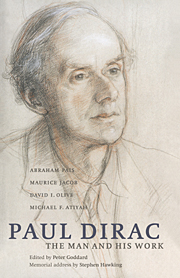4 - The Dirac equation and geometry
Published online by Cambridge University Press: 06 October 2009
Summary
Introduction
The differential operator introduced by Dirac in his study of the quantum theory of the electron has turned out to be of fundamental importance both for physics and for mathematics. Essentially the operator is a formal square-root of the wave operator or, with a different signature, of the Laplacian. In this lecture I will attempt to survey its role in mathematics. I will begin with the algebraic underpinnings, which go back to Hamilton and Clifford, and I will then go on to the role of the Dirac operator in Riemannian geometry. In particular I shall discuss various aspects of the index theorem. Finally I will briefly allude to the very recent results on four-dimensional manifolds, arising from new physical ideas of Seiberg and Witten.
Algebraic background
Let us begin by recalling Hamilton's quaternions. These are generated, over the real numbers, by three ‘imaginary” quantities i, j, k, satisfying the relation:
For a general quaternion
We define its conjugate by
Then the norm-squared of x is given by
The quaternions of unit norm form a group (the 3-sphere S3) with the inverse given by
This group acts by left and right multiplication on R4 = C2, giving the two ‘spin representations’ of S3. The group also acts by conjugation
on R3 (the imaginary quaternions, where x0= 0). This gives a double covering
with kernel ± 1.
For three and four dimensions the quaternions provide all one needs to understand spinors (and in due course the corresponding Dirac operator).
- Type
- Chapter
- Information
- Paul DiracThe Man and his Work, pp. 108 - 128Publisher: Cambridge University PressPrint publication year: 1998
- 1
- Cited by

